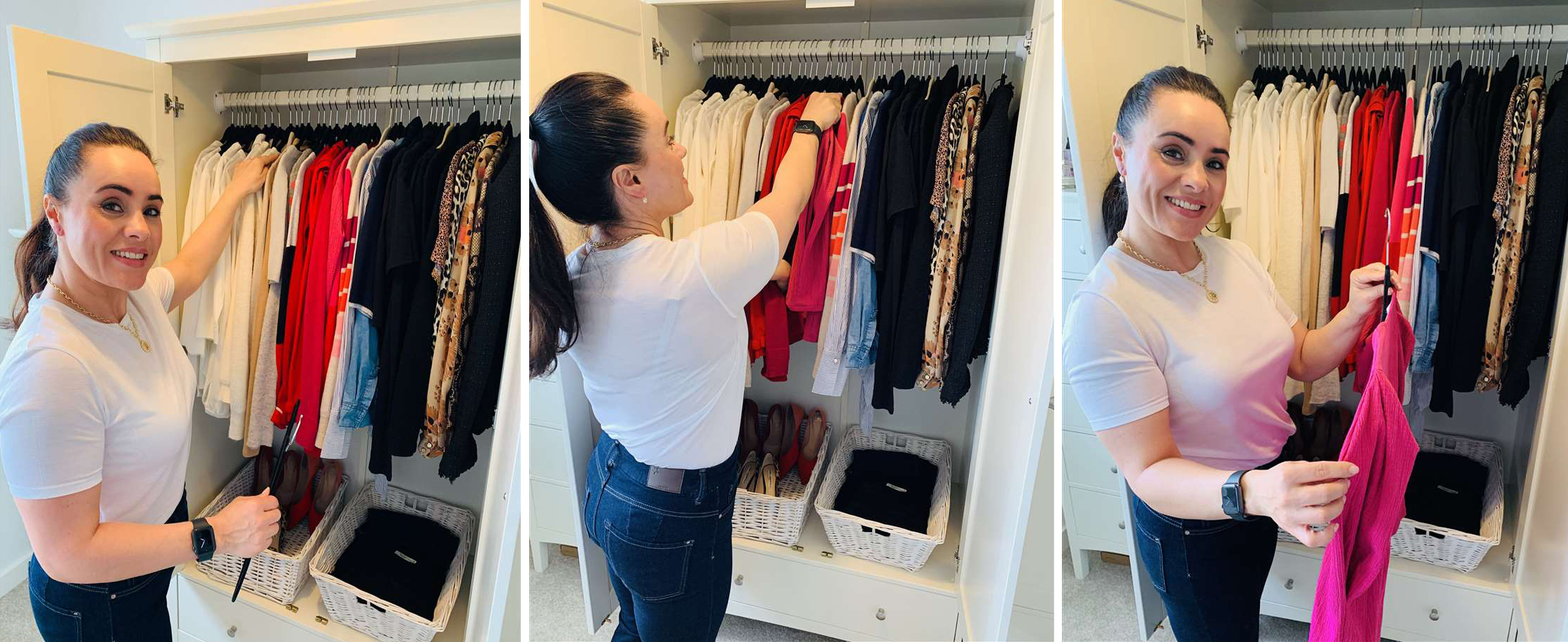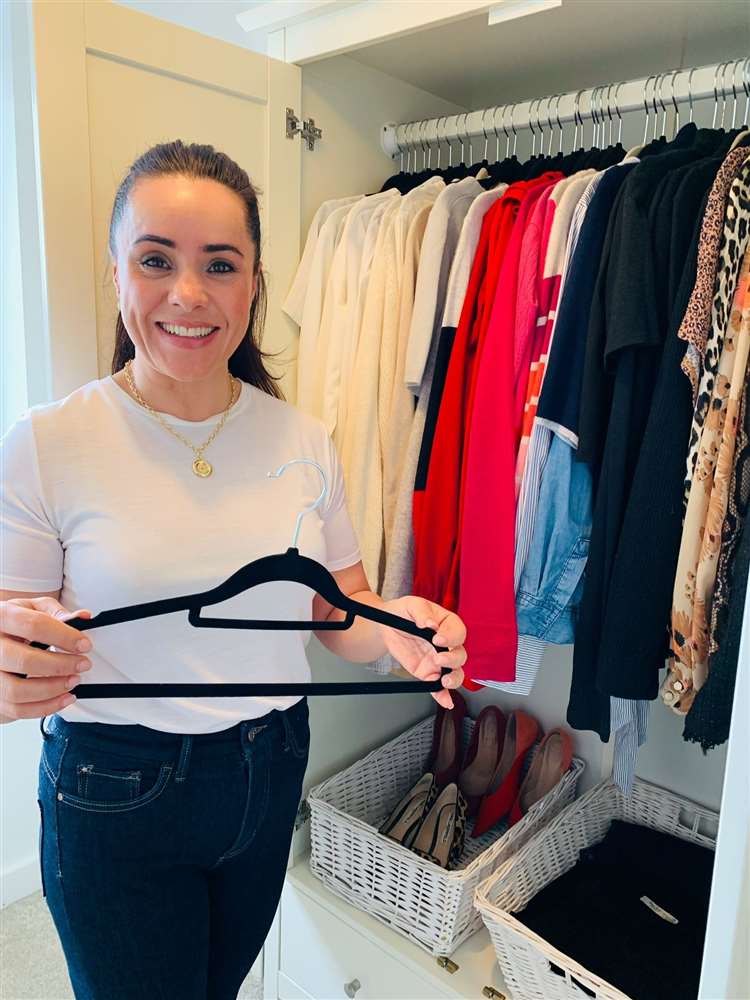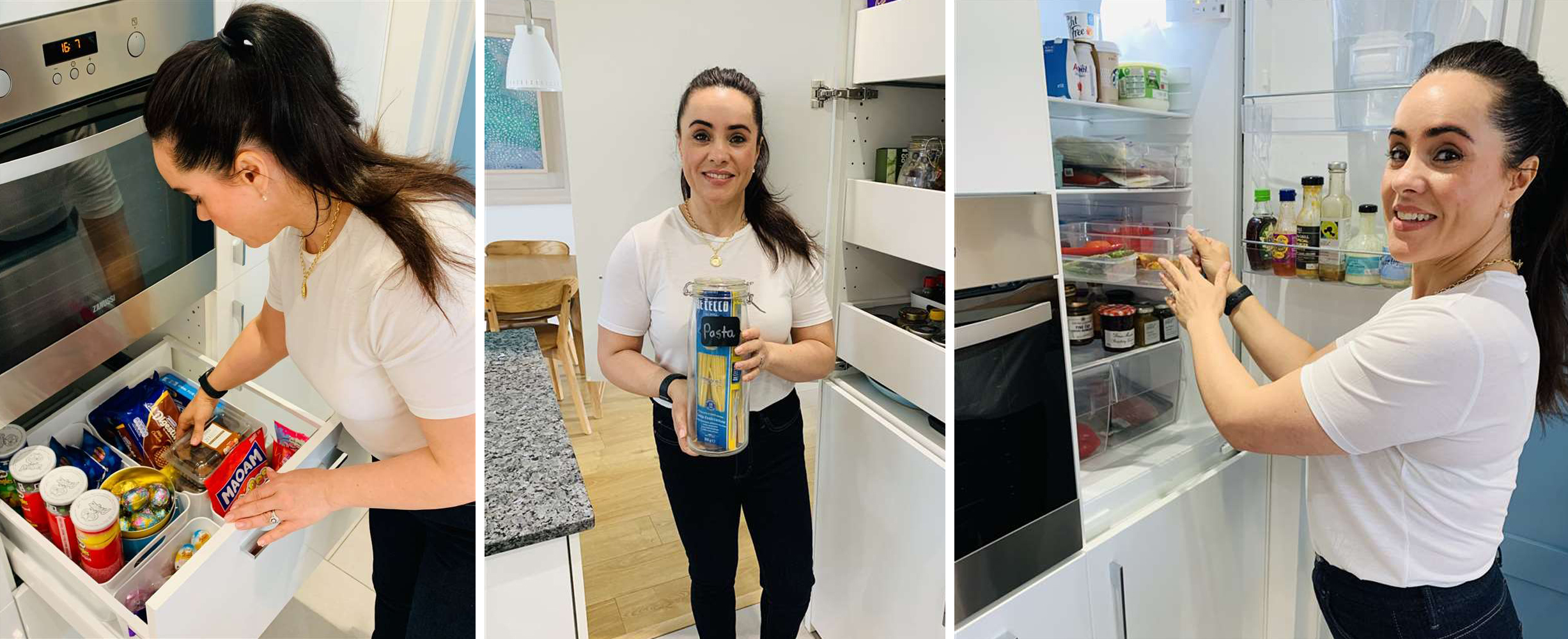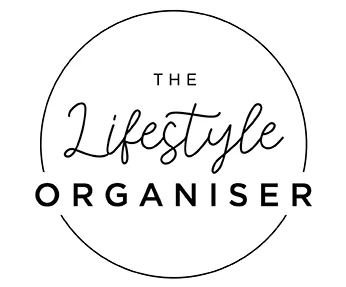We all know that restless feeling…
It starts when the daffodils appear and builds to a peak as the May sunshine streams through our windows. Spring is well and truly here and it’s time to refresh, regroup and march on into summer with a clean home and a clear conscience. But all too often something is blocking our way. It may be be out of sight, out of mind, but we know it’s there … clutter.
The over-stuffed wardrobe. The kitchen shelves laden with obscure ingredients you didn’t even know existed until a celebrity chef used them on TV. And the ‘cupboard from hell’ where opening the door starts an avalanche of wellies, old hairdryers and bags for life we have been meaning to sort out since we squeezed in yet another unwanted gift in January 2012.
All this is familiar territory to Elizabeth Wickes, otherwise known as The Lifestyle Organiser.
Elizabeth is a professional organiser and declutterer. She has had training but also draws on her own experience as an Office and Events Manager, with over 10 years professional experience, mum of two young children, and wife.
The urge to organise has been there since childhood. “I’ve always been neat and tidy,” she said.
“My dad was a chef so he had an immaculate kitchen. If we had visitors I would be the one tidying the house before they came. Luckily my husband Matthew is also neat and tidy and we look after our things. That’s how we were brought up.”
Growing up she was inspired by Ann Maurice, television’s House Doctor, who helped home owners style their houses to appeal to buyers. Now it is Marie Kondo – tidying expert, Netflix star and author – whose ideas spur her on. Using her talent for organising to help others was at the back of her mind for several years. But it was only this year it became a reality.
Sometimes, she says, all you need for that new start in your home is a fresh pair of eyes.
“I hope that because of my background managing an office and being a mum of two kids I’m relatable to people,” said Elizabeth. “All my skills are transferrable.”
“My service includes organising life, home and office. I can help with small businesses, and office space for home businesses – setting up paperwork, complying with health and safety, and filing.”
Elizabeth lives in Clare with Matthew, an NHS Senior Commercial Manager, and their children Emily, 10, and Sebastian, known as Seboo, who is eight.”I worked as an office and events manager in London, which I did for over 10 years.”
“We escaped London in 2013 when I had my second child. My husband still worked there, and was commuting, and I was a full time mum and home organiser. The other day I was looking through some files on our laptop and found things I had saved on professional organising from 2017 onwards.”
The nudge into action came last year when she discovered a self-help book called This Girl is on Fire by broadcaster and ex-Loose Women star Andrea McLean. “It was an inspirational book. I read it and the time felt right. I had a discussion with my husband, and started the ball rolling last October, registering my business name and deciding on my domain name. I was aware of APDO – the Association of Professional Declutterers and Organisers. I had an inspiring conversation with their training director, Julie Stevens, and completed their training and accreditation course in December. Then I started looking to see if there was any funding available and came across a government loan scheme. Part of this was a two-day course on how to set up your business, so two days after Christmas I did that.”
It was all systems go … then lockdown happened.
“My son went back to school full time, because my husband is a key worker, but my daughter needed to be home schooled.” To prepare herself for taking clients she experimented by offering advice to family and friends. “They were my guinea pigs,” she said.
“It has been a really interesting couple of months, but I never ran a business before and I am still learning things. It’s been exciting, stressful, and overwhelming but it’s great.”
She thinks most people’s perception of a professional declutterer is the expert dealing with extreme cases of hoarding as seen on TV shows. Cases like that, she says, need real specialist help. APDO, which has 300 members, has highly-trained people with relevant experience. “If I were contacted by a prospective client with complex hoarding issues, I would recommend a fellow APDO member, who has the specialist training in helping and supporting individuals with additional needs,” she said.
The idea of getting professional help to declutter your home has become more popular in recent years.
“I think it helps your mental state if you have a nice clear space,” she says. “I help my clients tlive with less stress in clutter free spaces.”
“It’s not about having an ‘Instagram’ home – not so that you and family members feel nervous about touching things. The reason for decluttering is to make you more comfortable and less stressed – to make life easier. “Sometimes people don’t want to entertain in their homes because they view their homes as unwelcoming and cluttered. It’s also about having people into you home and not feeling self-conscious or embarrassed. Some people know they need help sorting things out.”
“Every client is unique. It’s not always because they are disorganised and have lots of clutter. They may be busy, working full time, and just need someone to come along and say ‘how about that’. “Or they may be people who are older, frailer, or disabled who might need extra support sorting things out. Declutterers prefer to work collaboratively with clients, asking their permission as to what’s going and what’s staying. We will never coerce anyone into giving anything away. We are there to offer a support and a system. We’re not about throwing things in a skip unless they’re broken or useless. It’s all about sustainability.”
Upcycling is another way of giving new life to something with a sentimental attachment. A second hand bureau might not be to your taste but with a coat of paint it could fit in just fine.
“It’s about listening, knowing what people’s boundaries are,” said Elizabeth. “Even I sometimes find it difficult to get rid of things like children’s toys or art … but you can’t keep everything.”
“I’ve started taking photos of artworks – I’m going to produce a lockdown artwork book.”
Wardrobes are a classic source of clutter and the change of seasons – when winter woollies make way for summer gear – is an ideal time to tackle the clothes mountain. I will get a section out at a time, for instance sweaters, inspect each garment and ask ‘do you want to keep this?’ she says. “I’d encourage them to try everything on. We’ll have piles for donating, recycling, rubbish, and selling. Some people have designer clothes they could sell. Winter clothes can then go into the loft in storage boxes. Organising the slimmed-down wardrobe is the next step. Some people colour-match everything, others prefer to sort by garment type.

“I’d always suggest using slimline velvet hangers. They take up so much less space than plastic ones and they look pretty.
“And a good tip is to turn the hangers round to face the other way when you’ve worn something, so when it comes to be packed away you’ll know if it needs washing.”

Before starting to work with a client she would put a plan in place, and ask them to decide what they want from each room or space.
Kitchens can be another clutter minefield. Pantries, cupboards, shelves and worktops fill up all too easily with things you are never going to use. “Ask yourself, do you really need three garlic presses? Put two in the donate box or give to a friend. Do you need that wok? Do you want that mug from Sports Direct? “Donate that jar of Christmas chutney which is within date but you’re never going to eat to a foodbank.

“Once the pantry is decluttered we’ll start grouping things, like all sauces in one place. I’d decant things like pasta into glass jars and create systems to make it easier for them to use their kitchen. “If you are a keen baker, have all those things close to hand. If not they go further up. And put all like items, pans say, in one place.”
When decluttering she also suggests thinking about where you would like donated items to go. Toys, for instance, could go to a refuge for women and children. Declutterers are now able to work within Covid rules. “We are seen as tradespeople so we can go into homes. We have to open windows and wear masks and gloves. I always do a lateral flow covid test in advance of each session with a client. A lot of professional organisers have also been doing virtual online sessions on Zoom or Whatsapp where we can prompt people through the process of decluttering and organising their homes.”
To contact Elizabeth call 07533 330115
or visit www.thelifestyleorganiser.com for more information.
Elizabeth’s top tips for a DIY declutter
1. Get prepared
The only supplies you need to start the process are plenty of rubbish bags and a couple of large boxes. Assign each container for rubbish, recycling, donations to charity and/or friends and family, and finally a box for selling. Put your favourite music on and make sure you have some treats to enjoy in your well-earned breaks.
2. Start with one room
Tackle all the visible clutter first, focusing on the floors, and surfaces and open shelves. Throw away visible rubbish and remove items that don’t belong in that room. Then work through individual areas or piles of items that are out in the open.
Once you’ve done that, you can either start on the hidden spaces, such as cupboards and drawers, or you may decide to continue tackling the visible clutter in other rooms. If you decide to take on your wardrobe, or are swapping out your seasonal clothes, spring is the perfect time to do this. The first step to having an organised wardrobe is to let go of the items you never wear. Take some time to select the clothes that make sense for your weekly routine. Donate or sell the rest and make sure to keep a basket for storing donations as and when they arise. Hanging items by type, style, and colour will make it easier to see what you own and make getting dressed in the mornings less stressful.
In the kitchen go through your food cupboards and/or pantry. Take everything out, wipe down shelves, and remove any out of date items. Unopened and in date food can be donated to your local foodbank or advertised for free on Olio. For a stylish and sustainable fridge, clear plastic containers to hold your perishable food items create a clean, streamlined look, and also makes it easy to see when items need to be replenished. I have one container labelled “Eat Me” and place all leftovers or opened jars in it – so I am prompted to look and use what is in there first. This small shift will save you money, and reduce your waste.
3. There’s so much stuff!
Start small. Whilst putting the kettle on, sort through your crockery cupboard. Remove all chipped mugs and donate those ‘freebie’ mugs or the tea set that Aunty Sue gifted you but it’s not your style, to your local charity shop or homeless shelter. Kitchen surfaces can be magnets for clutter and this happens when items such as post and paperwork don’t have clearly allocated homes. Take a few minutes to relocate what doesn’t belong in the kitchen.
4. What about cleaning?
One of the biggest advantages of decluttering is that you will be able to clean your home more easily. Quickly go over the super-dusty areas. Come back for a deep clean once the room has been decluttered.
5. It doesn’t all have to be done in a day!
Please remember, the spring refresh doesn’t all have to be done in a day or even over a weekend. The end goal is about creating more space in your home and living with less stress in clutter-free spaces.Seeing what you’ve achieved so far will create a sense of job satisfaction and will hopefully incentivise you to keep going.

